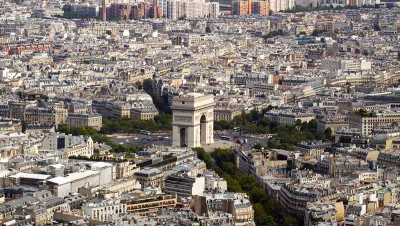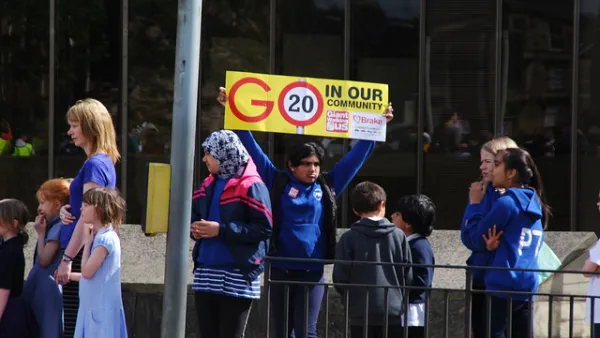A blog post by Eric Britton covers Mayor Madame Anne Hidalgo's plans to adopt a 30 kilometer per hour (approximately 20 miles per hour) maximum speed limit in Paris.

As Angie Schmidt reports, slow-speed zones are gaining traction in cities that want to improve pedestrian safety and enhance livability. Schmidt lists 20 miles per hour zones in New York City, similar adoptions in London with studied benefits, and now Paris for the city in its entirety (minus a few major streets). Schmidt cites Eric Britton's recent blog post as the latest high profile example on this slowing-things-down movement—what Britton calls "slowth."
Britton says that if the city adopts Mayor Madame Anne Hidalgo's plan, the new citywide slow-speed limit will be implemented on all streets except a "small number of major axes into the city and along the two banks of the Seine, where the speed limit will be 50 km/hr, and the city’s hard pressed ring road (périphérique) where the top permissible speed has recently been reduced from 80 to 70 km/hr." Per Britton, in addition to the reduced citywide speed limit, there will be "'meeting zones' (zones de rencontre) spotted around the city in which pedestrians and cyclists have priority but mix with cars which are limited to a top speed of 20 km/hr."
Britton writes that Mayor Hidalgo's idea expands upon "a steady increase in the number of zones reserved for pedestrians only, and more recently a step-by-step movement to “eco-areas” (see http://www.eco-quartiers.fr) where top speeds are already limited to 30 km/hr. By 2013 some 560 kilometers of the city streets were already in such areas, about one third of the total." Britton hopes to see significant results from the reduced speed limit, such as "substantially fewer accidents, significant reduction in serious injuries and deaths…reduced carbon stress on climate, and the long list goes on."
FULL STORY: Paris to limit speeds to 30 km/hr over entire city

National Parks Layoffs Will Cause Communities to Lose Billions
Thousands of essential park workers were laid off this week, just before the busy spring break season.

Retro-silient?: America’s First “Eco-burb,” The Woodlands Turns 50
A master-planned community north of Houston offers lessons on green infrastructure and resilient design, but falls short of its founder’s lofty affordability and walkability goals.

Delivering for America Plan Will Downgrade Mail Service in at Least 49.5 Percent of Zip Codes
Republican and Democrat lawmakers criticize the plan for its disproportionate negative impact on rural communities.

Test News Post 1
This is a summary

Test News Headline 46
Test for the image on the front page.

Balancing Bombs and Butterflies: How the National Guard Protects a Rare Species
The National Guard at Fort Indiantown Gap uses GIS technology and land management strategies to balance military training with conservation efforts, ensuring the survival of the rare eastern regal fritillary butterfly.
Urban Design for Planners 1: Software Tools
This six-course series explores essential urban design concepts using open source software and equips planners with the tools they need to participate fully in the urban design process.
Planning for Universal Design
Learn the tools for implementing Universal Design in planning regulations.
EMC Planning Group, Inc.
Planetizen
Planetizen
Mpact (formerly Rail~Volution)
Great Falls Development Authority, Inc.
HUDs Office of Policy Development and Research
NYU Wagner Graduate School of Public Service



























